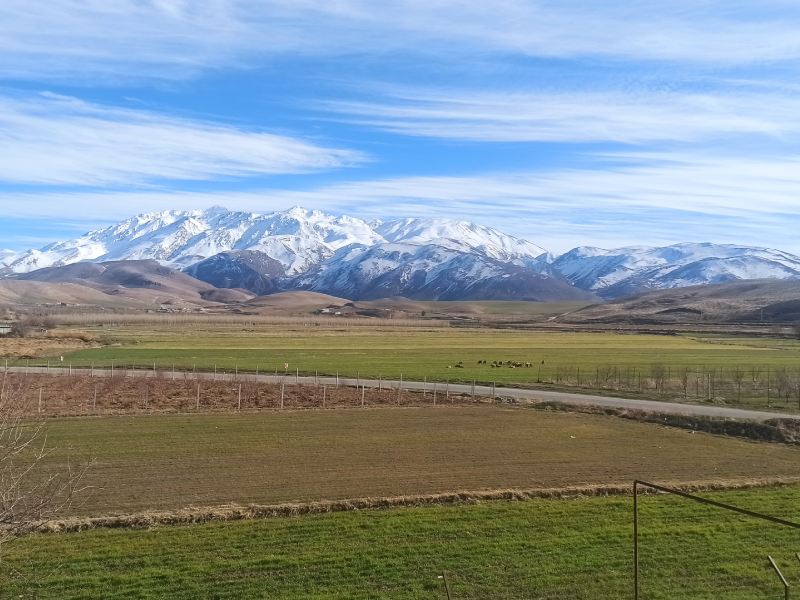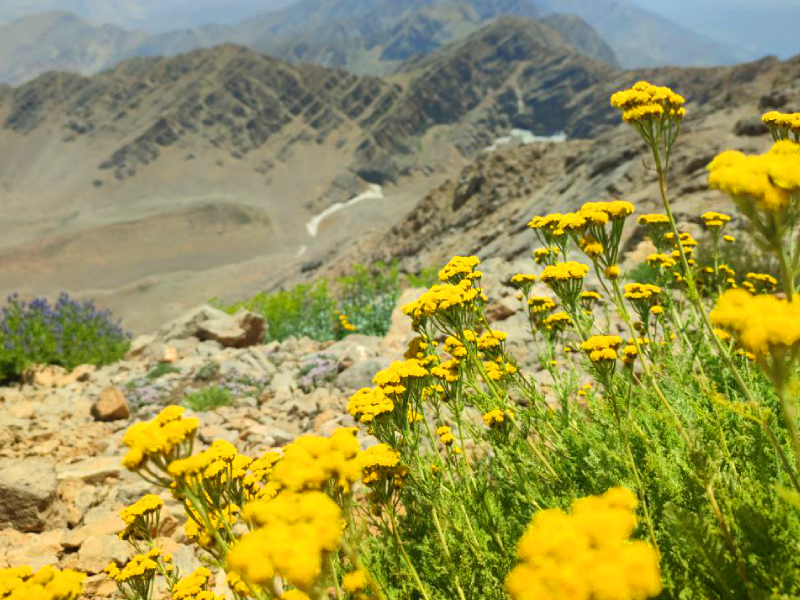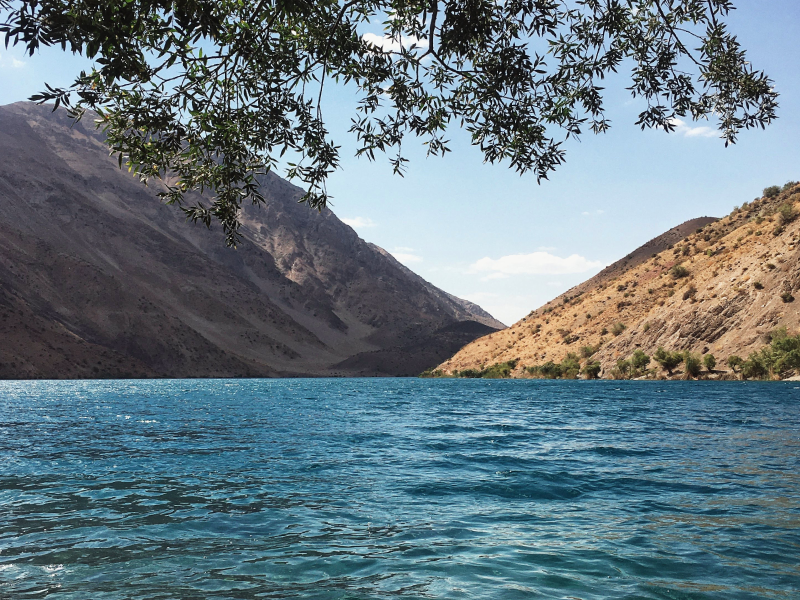Oshtorankuh, Lorestan (Age, Location, Map, Photos)
Oshtorankuh is a magnificent mountain range that is revered for its rugged terrain, diverse biodiversity, and amazing scenery. Translated as Camel Mountain in Persian, this stunning natural wonder stands at 2,575 meters (8,448 feet) and beckons adventurers, nature enthusiasts, and culture seekers.
From its lush oak, walnut, and pine forests to its pristine wildlife, such as wild goats, leopards, and eagles, Oshtorankuh fascinates everyone. Join us in this article to become familiar with this huge mountain and its attractions, as well as the essential tips for climbing it.
Oshtorankuh Mountain Range
Oshtorankuh, known as the “Iranian Alps,” is the highest point of Lorestan province, which extends from the southeast of Dorud to the northwest of Aligudarz. Its highest peak, which is called Sanbaran, has a height of 4150 meters, which is considered one of the most prominent peaks in the world.
This mountain range is the source of one of the main branches of the Dez River called Marbareh. It is said that due to the presence of eight peaks, some of which are more than 4000 meters high and are lined up like a camel caravan, this mountain range is called “Shotor Kuh” or Oshtorān Kūh.
Among its prominent peaks, we can mention Chal Mishan, Gol Gol, Gol Gohar, Senbran, Kule Layo, Mirzaei, Fialson, Lage, Sarab Shah Takht, Suzani Mehr Jamal, Pyare Dare Takht, Pyare Kamandan, Azna Dare and Kole Jon. Many small rivers originate from these peaks, including Marbareh, Gohar Rood, Darreh Dayi, and Darreh Dezdan.
Oshtoran Kuh Meaning
Oshtoran Kuh, which translates to “camel mountain,” has a symbolic meaning derived from its unique landscape and geological features. This name indicates the similarity of the peaks of this mountain range, which are majestically one after the other, like a caravan of camels crossing the horizon.
This image evokes the endurance, flexibility, and steadfastness associated with the camel, qualities that are reflected in the rugged beauty and formidable nature of the Oshtoran Kuh. As an outstanding natural landmark in Lorestan province, Oshtoran Kuh is a reminder of Iran’s great cultural heritage and natural wonders.
Oshtorankuh Location
Oshtoran Kuh is located in Lorestan province and the administrative part of Dorud, Azna, and Aligudarz counties. Oshtorankuh protected area is spread across these three cities; its southern and southeastern borders are extended to Dorud, and its western part is extended to Azna and Aligudarz.
This area, which is known as one of Lorestan’s tourist attractions, offers unique natural beauty.
Access to Oshtorankuh
For those who are interested in climbing Oshtoran Kuh, it takes approximately three hours to reach Tian village by private vehicle from Khorramabad. Tian is one of the mountainous villages of Oshtorankuh and is a part of Azna County. From there, continue towards the Gole Gol Refuge.
Oshtorankuh Map
The map of Oshtorankuh is a useful tool for navigating the routes and terrains of the Mount Oshtoran range. This detailed map provides essential information about the various trails, landmarks, and key points of interest in the area, making it easier for hikers and adventurers to plan their trip and stay on the trail (Location on Google map).
The Oshtorankuh map is your trusted guide to discovering the natural wonders of this stunning landscape and climbing the Oshtorankuh peak.
Animal Species
Mammals: Mammals living in Oshtoran Kuh include the Iranian leopard, brown bear, goat, sheep, wild cat, marten, wolf, fox, and badger. Various species of rodents, such as ground squirrels, hamsters, and bats, such as the Mediterranean horseshoe bat and the white-winged bat, are also found in this area.
Birds: Among the species of birds living in this area, we can mention rock partridge, kestrels, eagles, falcons, and all kinds of owls. In addition, you can see woodpeckers, tits, jays, and many other species of birds.
Reptiles and amphibians: Oshtoran Kuh is home to reptiles such as leopard geckos, Iranian agama, snakes, and lizards, including Zagros viper and grass skink. In addition, different species of turtles live in this area.
Fish: Colorful fish such as rainbow trout, golden and black trout, and barbel are among the aquatic species found in the rivers and streams of this region.
Plant Species
Oshtorankuh has a rich plant diversity, with more than 600 plant species in this area, including 68 native species.
Among these plants, we can mention oak, juniper, wild fig, wild pear, wild cherry, raspberry, hawthorn, wild almond, walnut, wild thyme, rosemary, anemone, and all kinds of grass.
In addition, you can find other plants such as mountain asparagus, Lorestan asparagus, snow flower, tulip, mint, Persian chive, wild barley, fescue grass, and many others in this area.
Snow Tunnel of Azna
The snow tunnel is a unique and stunning phenomenon in Azna County, on the southeastern edge of Oshtoran Kuh, at an altitude of 2,500 meters above sea level, on the northern slope of Kol-e Ozna peak. Due to its special topography, which is surrounded by high walls on three sides, this place becomes a place for snow accumulation and gathering during the cold months of the year.
The accumulation of snow in this valley turns it into a natural glacier, and then the movement of water in the valley floor creates a tunnel under the snow.
Tunnel of Azna Features
The length of the tunnel varies and depending on the time of year it can reach several hundred meters.
The maximum length of the tunnel is recorded in the months of April and May, while the minimum is in September and October.
The width of the tunnel in some places is 10 meters, and its height reaches 2.5 to 3 meters.
The shape of the tunnel follows the shape of the valley, hence it has a steep slope. Therefore, the air inside the tunnel is very cold due to the proximity to ice and snow, and sometimes creates a temperature difference of more than 25 degrees Celsius compared to the outside.
Azna snow tunnel can only be visited in spring, summer, and early autumn due to special weather conditions.
Lake Gahar
Gohar Lake is one of the most beautiful mountain lakes in the Middle East and one of the largest freshwater lakes in the country, which is located at an altitude of 2360 meters in this region.
Gohar Lake, which is known as the “Gem of Oshtoran Kuh and Zagros,” consists of two parts: Gohar Bozorg (Big Gohar) and Gohar Kuchak (Small Gohar). Big Gohar is 400 to 800 meters wide and 1800 meters long, while Small Gohar, with an area of approximately five hectares, is a great destination for nature lovers.
Final Word
Oshtoran Kuh is a wonderful natural wonder in Lorestan Province, Iran, which has a lot of attractions for visitors. From towering peaks and rugged landscapes to diverse wildlife and stunning mountain lakes like Gohar Lake, Oshtoran Kuh provides a fantastic experience for nature lovers and adventurers.
With its cultural importance, geological splendor, and unique beauty, Oshtoran Kuh is truly worth a visit and provides an opportunity to enjoy the wonders of the natural world and create lasting memories among the stunning landscapes of Iran.
Nature lovers should not neglect to visit Oshtorun Kuh because it is an opportunity to connect with nature, experience its quiet beauty, and embark on unforgettable adventures in the heart of the Zagros mountains.
Are you planning to travel to Iran and looking for an Iran travel agency? Check out our Iran tours, Iran climbing tour and feel free to contact us.









Leave a Reply
Want to join the discussion?Feel free to contribute!